Key takeaways:
- Restoring vintage toys connects us to our childhood and preserves cultural history while promoting sustainability.
- Choosing non-toxic acrylic paint and testing finishes on inconspicuous areas is crucial for effective restoration.
- Proper preparation, including cleaning and fixing any issues, leads to better painting results and a more professional finish.
- Sealing painted toys with a clear coat and using padded storage prevents damage, ensuring the longevity of restored treasures.
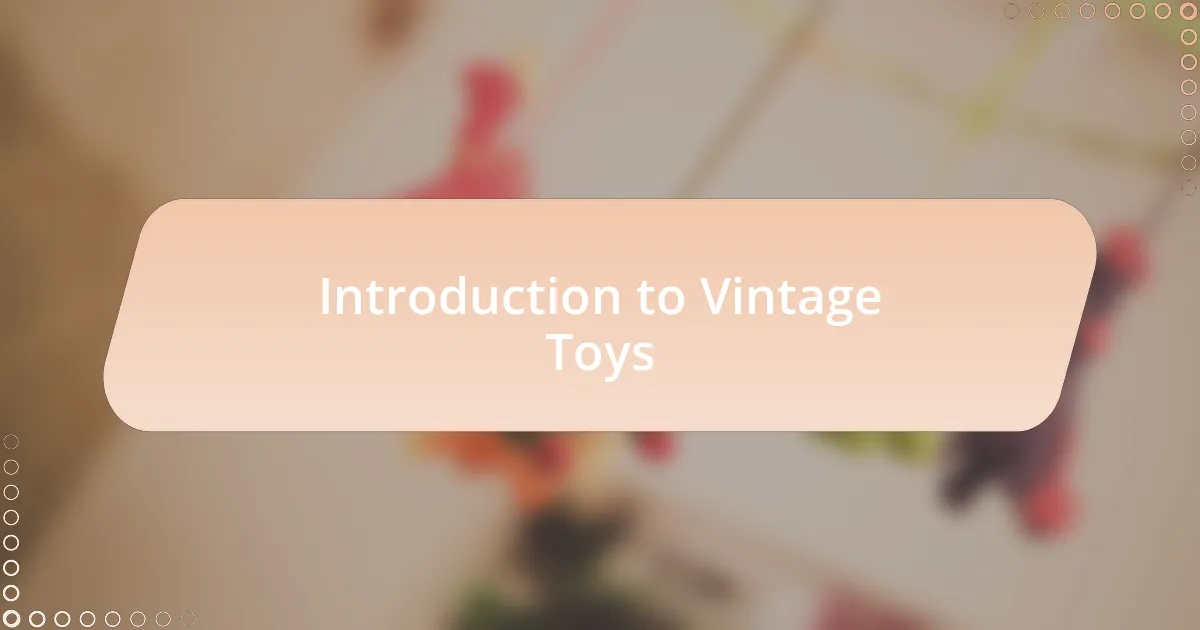
Introduction to Vintage Toys
Vintage toys hold a special place in many hearts, often evoking memories of carefree childhood days. I remember finding an old tin robot in my grandmother’s attic; its charming design and cheerful colors brought back a wave of nostalgia. Isn’t it fascinating how a simple toy can transport us back in time, reminding us of our inner child?
These toys are not just relics; they represent a significant part of our cultural history. Each one tells a story, reflecting the era it came from, and it’s mesmerizing to think about how they influenced play and imagination for generations. I often find myself pondering—what stories would these toys tell if they could speak?
The allure of vintage toys goes beyond their aesthetic appeal. For many collectors, they symbolize a connection to the past and a desire to preserve those fleeting moments of joy. I find it incredibly rewarding to breathe new life into these toys, reviving their colors and features, making them cherished pieces once more.
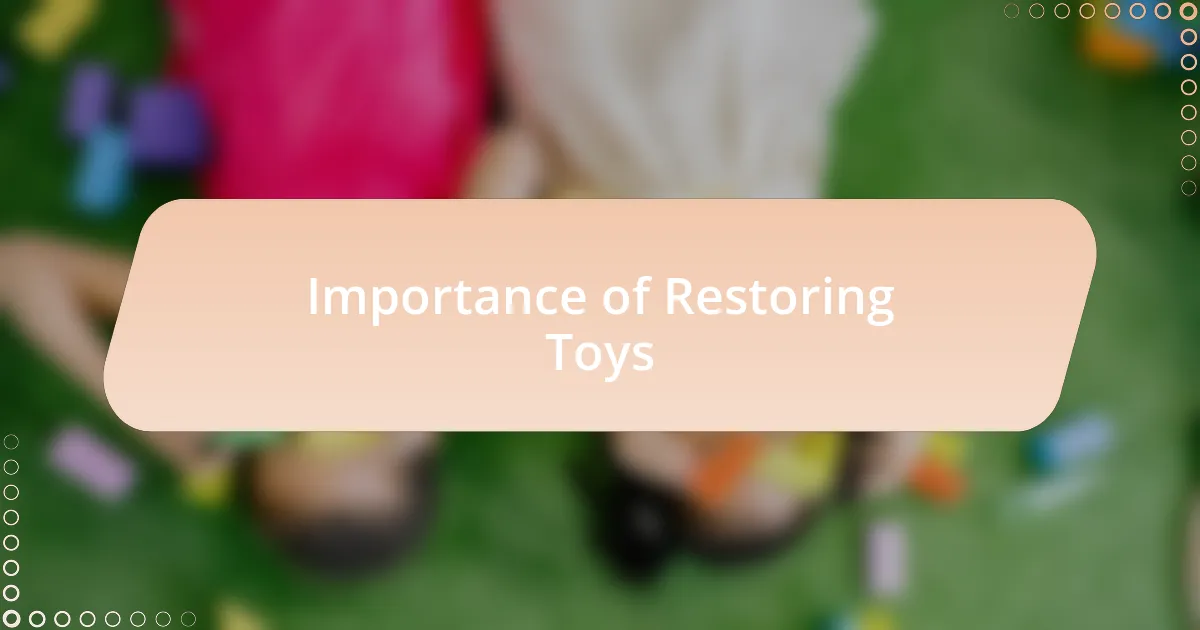
Importance of Restoring Toys
Restoring vintage toys is not merely a hobby; it’s a journey into history. I recall the satisfaction I felt while repainting an old wooden train. Each brushstroke brought back memories of my own childhood adventures on those very tracks, emphasizing the deep connection we forge with these toys. Don’t you think it’s amazing how a toy can mirror our past experiences?
Preserving these treasures is also about sustainability. By restoring and reusing old toys, we reduce waste and honor craftsmanship that’s often lost in today’s mass production. I remember finding a 1950s wind-up toy that was on the brink of being discarded. After some effort, it sprang back to life, reminding me of the joy of playing with something that has a story to share. Isn’t it gratifying to see that history transformed and given a second chance?
There’s an undeniable emotional fulfillment that comes with restoring toys. Each project becomes a personal endeavor, a way to connect with my childhood while contributing something meaningful to my collection. When I see a restored toy shine like new, it’s as if I’m placing a piece of my own history back in the spotlight. Have you ever felt that rush when you revive something lost? It’s a beautiful reminder of the joy these toys once brought to us.
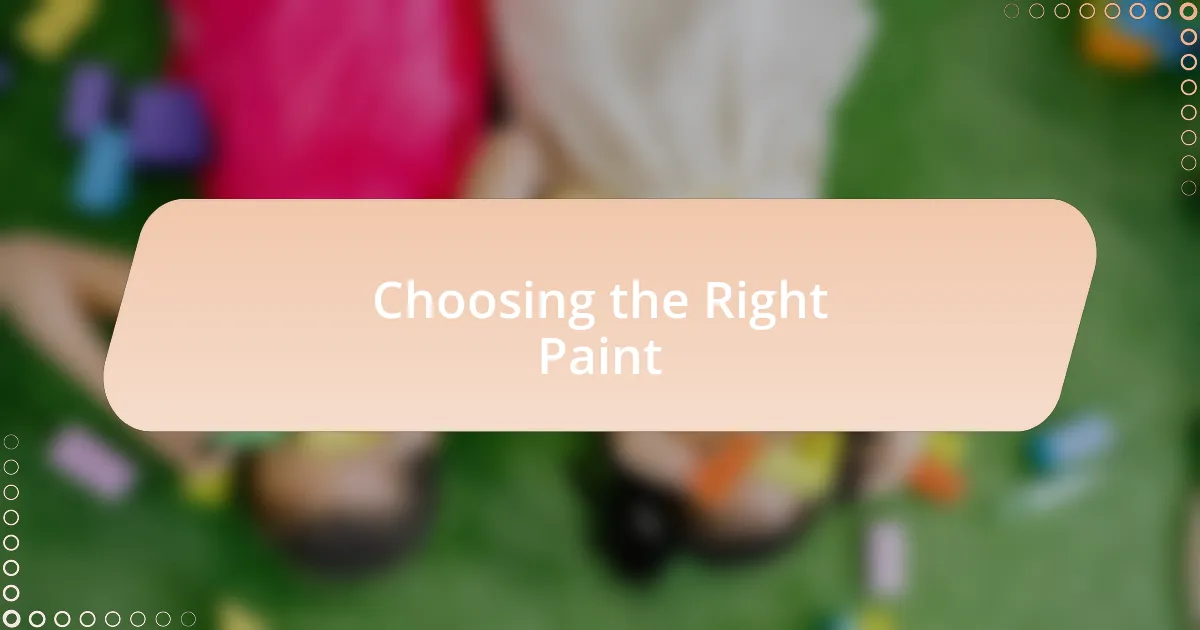
Choosing the Right Paint
When it comes to choosing the right paint for restoring vintage toys, I always prioritize non-toxic options. I once made the mistake of selecting a paint that had a strong chemical smell, and it lingered long after I finished the project. Can you imagine the disappointment of realizing I had compromised my health for the sake of a toy? Opting for acrylic paints not only ensures safety but also provides vibrant colors that breathe new life into old treasures.
Another aspect to consider is the finish of the paint. I’ve experimented with both matte and glossy finishes, and I find that a satin finish often strikes the right balance. During one restoration, I used a glossy paint on a classic dollhouse, only to realize it made the details less visible. Have you ever faced that frustration? A satin finish enhances the toy’s features while offering just the right amount of sheen.
Lastly, I can’t stress enough the importance of testing the paint on a small, inconspicuous area first. I learned this lesson when I restored a 1960s robot. The paint I initially chose turned out to be too dull for my taste. I felt like I was covering up the toy’s personality instead of revealing it! By testing, I gained confidence in my choices, ensuring each step led to something I could truly celebrate. Isn’t it reassuring to know that the right paint can truly make your restoration shine?
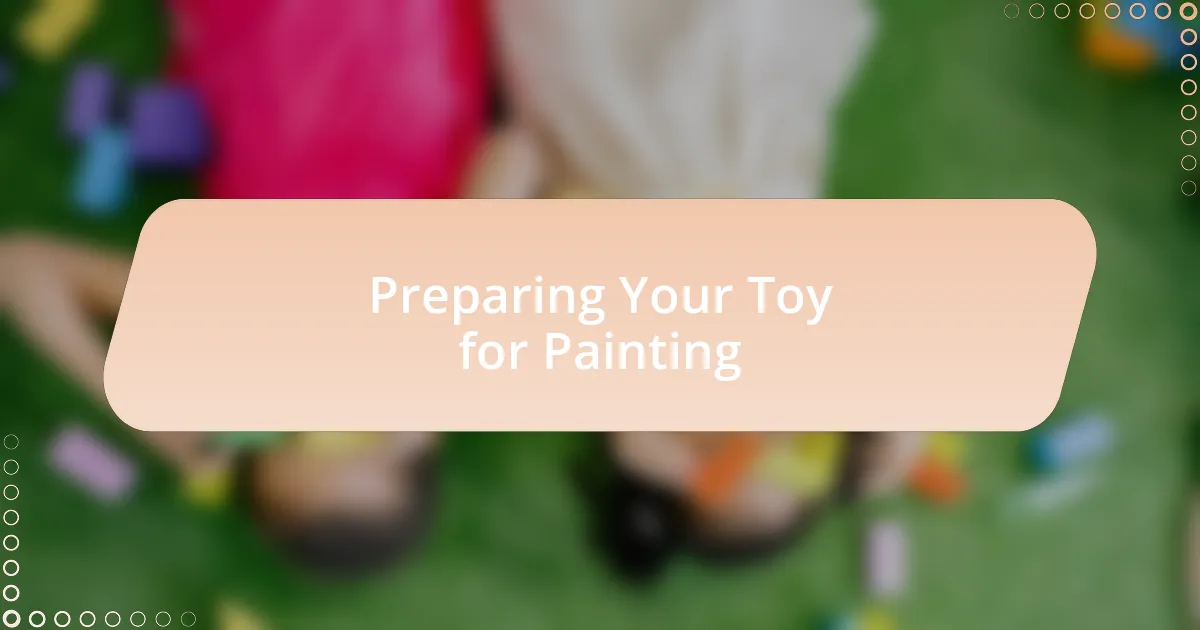
Preparing Your Toy for Painting
Preparing to paint your vintage toy is crucial for achieving the best results. First, I always give the toy a thorough cleaning. I remember restoring a charming wooden pull toy that was so covered in dust and grime, I could barely see its original colors. After a good wash with warm, soapy water, the transformation was incredible; it felt like I was uncovering a hidden gem. Have you noticed how much clearer the toy’s details become once it’s clean?
Next, I consider any necessary repairs. During my work on a beloved tin robot, I realized that one arm was slightly loose. Instead of ignoring it, I fixed it before painting because addressing such issues upfront saves time and stress later on. Trust me, it’s much more satisfying to paint a stable toy than to wrestle with a wobbly one afterward!
Lastly, I always make sure to thoroughly dry the toy after cleaning and repairs. A few times, I got impatient and rushed this step, leading to unsightly bubbles under the paint. Waiting for the toy to dry completely might take longer, but it’s a small price to pay for a finish that looks professional. Have you ever felt the sting of impatience cost you a perfect painting job? Taking these preparation steps ensures a smooth foundation for painting, leading to a beautiful restoration.

Techniques for Painting Vintage Toys
When it comes to techniques for painting vintage toys, I often recommend using acrylic paint, as it provides a vibrant finish and is easy to work with. I once transformed a faded plastic action figure using a simple set of acrylics, and the vibrant colors brought the character back to life. Have you ever experienced the joy of seeing your favorite toy revive right before your eyes? Choosing the right paint can make all the difference.
I also find that using a fine brush is essential for getting into intricate details. While working on a small wind-up toy, I took my time to carefully paint the tiny facial features, and the end result was astonishing. It reminded me of the satisfaction that comes from paying attention to the little things. Did you know that sometimes, it’s those small details that truly elevate the overall appearance of the toy?
Layering the paint is another technique I swear by. Early in my restoration journey, I learned the hard way that applying too much paint at once leads to drips and uneven coverage. So now, I build up the layers gradually, allowing each one to dry completely before applying the next. This approach not only enhances the depth of color but also gives the toy a professional finish. Have you ever enjoyed the anticipation of waiting for that perfect layer to dry before seeing the final results? Trust me, that moment is worth the wait!
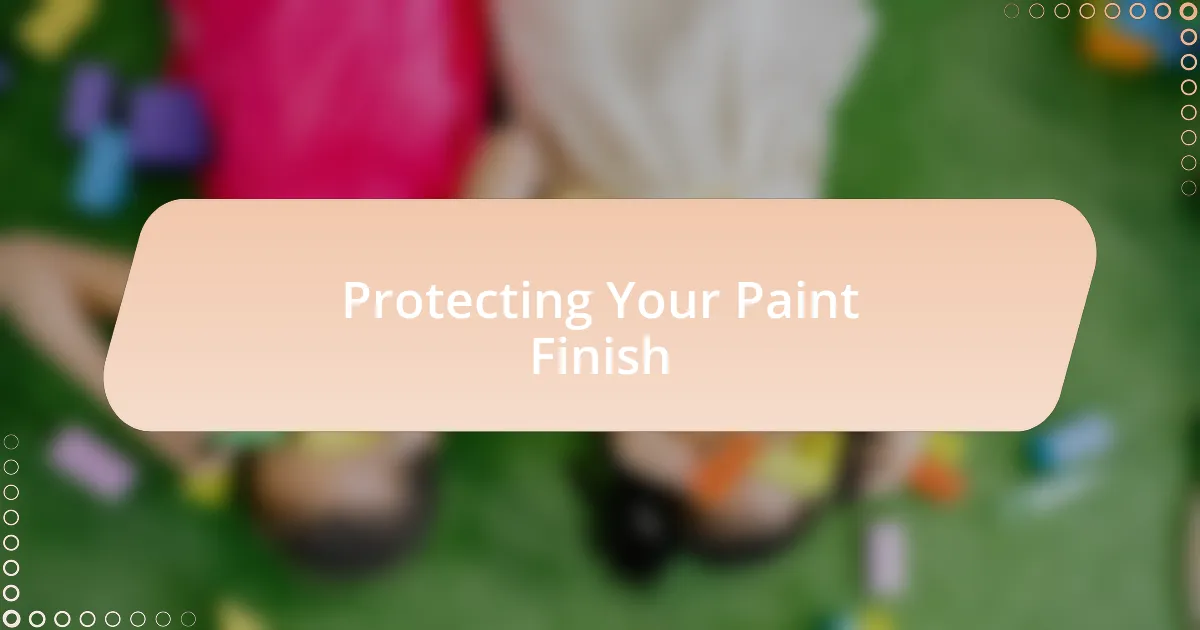
Protecting Your Paint Finish
To effectively protect your paint finish, sealing it with a clear coat is a vital step I always take. After redoing the paint on an old toy car, I used a spray sealant to ensure the vibrant colors wouldn’t chip away over time. Have you ever admired a well-preserved vintage toy and wondered how it stayed so pristine? A good sealant can make all the difference.
I’ve learned the hard way that even the slightest touch can lead to scratches on a fresh paint job. While working on a delicate doll, I was overly eager to show it off, and a careless brush against the rough surface caused a scuff. It was a disappointing moment that taught me the value of handling restored toys with care. Do you ever find yourself wanting to protect something you’ve put so much effort into? Just remember, a little caution goes a long way.
When storing your painted toys, I recommend using a padded container to prevent any accidental damage. A few months ago, I placed my restored action figures in an unprotected box, and later discovered several weren’t as flawless as I’d hoped. Have you ever experienced the regret of neglecting your collectibles? Proper storage keeps your hard work intact and ensures your nostalgic treasures remain as beautiful as the day they were painted.